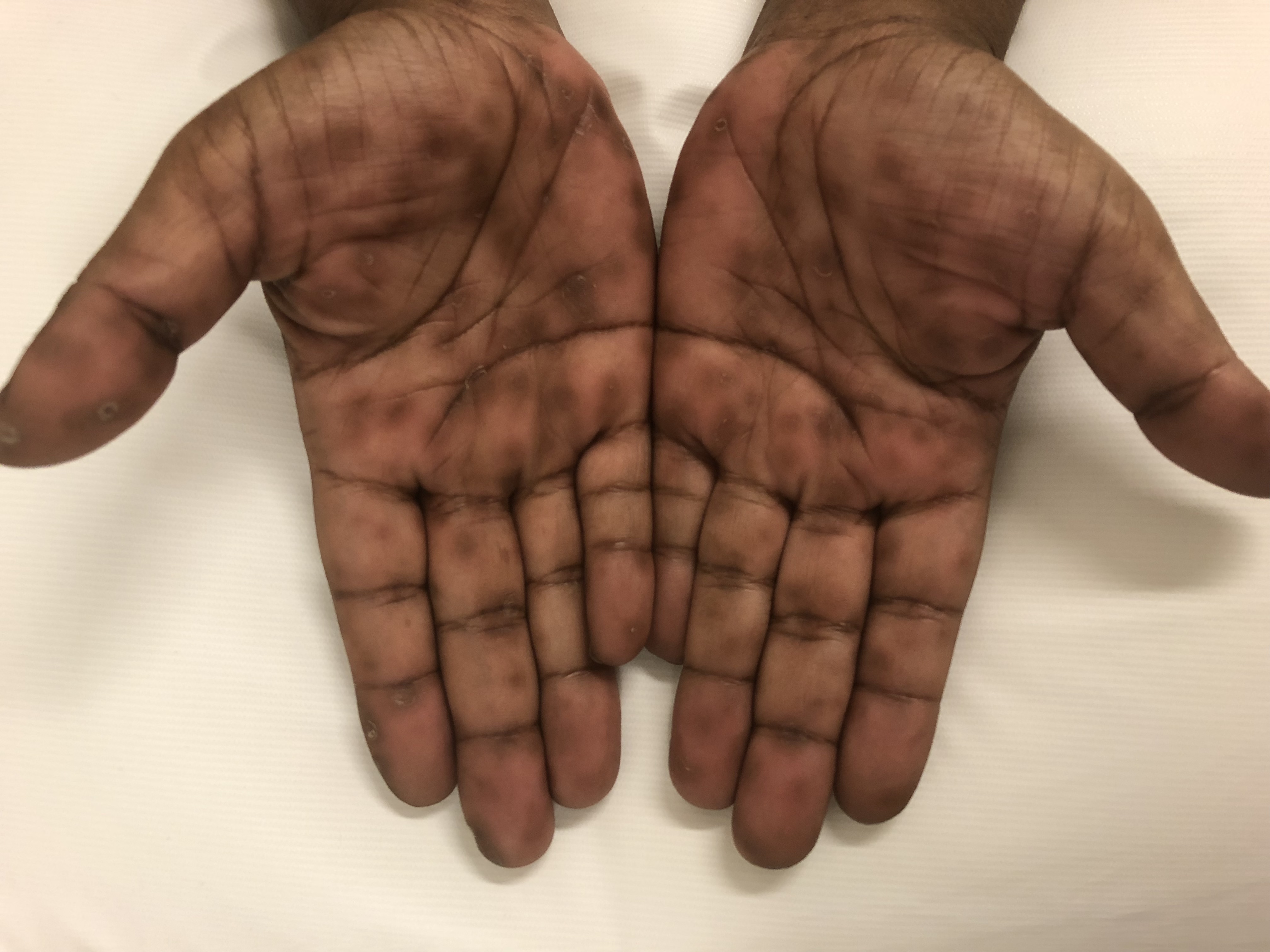Peer Reviewed
A Woman With a Rash on Her Palms and Soles
Authors:
Cyrelle R. Fermin, BS; Arturo P. Saavedra, MD, PhD, MBA; and R. Hal Flowers, MD
Department of Dermatology, University of Virginia School of Medicine, Charlottesville, VirginiaCitation:
Fermin CR, Saavedra AP, Flowers RH. A woman with a rash on her palms and soles [published online November 19, 2018]. Infectious Diseases Consultant.A 28-year-old woman with a history of alcohol abuse presented to the emergency department with a 2-month history of a mildly pruritic rash involving the palms and soles.
History. She reported a history of treated gonorrhea, chlamydia, and trichomonas infections. She had been sexually active with multiple male partners and reported inconsistent condom use. She reported occasional marijuana use. She had no history of hiking or other travel. She had a mild cough but denied fevers, chills, other systemic symptoms, or alterations in ocular or neurologic function.
Physical examination. Physical examination findings were notable for numerous reddish-brown macules on the bilateral palms and soles. Some had a surrounding collarette of scale and overlying hyperkeratosis, particularly on the soles (Figures 1 and 2). She also had a faint eruption of scattered reddish-brown macules and papules on her back. Oral examination revealed no mucous patches or split papules. She declined a genital examination. She had no hair loss, facial lesions, or lymphadenopathy.

Figure 1. Reddish-brown macules on the bilateral palms.
Figure 2. Reddish-brown macules on right sole with surrounding collarettes of scale and overlying hyperkeratosis.


